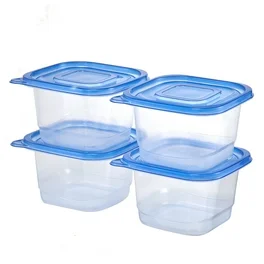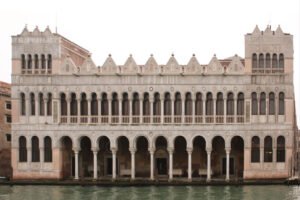Discovering the Magic of Dezawu in Home Decor
In the world of home decor, few movements capture the imagination like dezawu. With its roots deeply embedded in cultural expressions and artistic innovation, dezawu brings a refreshing vigor to spaces in need of aesthetic revival. For art lovers, home decor enthusiasts, and design professionals alike, the allure of dezawu is undeniable. This vibrant style is not just about decorating a room—it’s about transforming it into a canvas that tells a story. Whether you’re aiming to invigorate your living space or infuse your projects with a unique flair, understanding it can be the key to unlocking endless creative possibilities.
Throughout this blog post, we’ll explore the intricacies of it, a term that encapsulates a unique blend of traditional and contemporary design elements. We’ll guide you through its origins, its impact on modern art and design, and how you can incorporate it into your own spaces. From practical tips to inspiring examples, you’re sure to find something that resonates with your inner designer. By the end of this read, you’ll not only be familiar with the concept of it but also equipped with actionable insights to bring this dynamic style into your home or work.
With a focus on simplicity and elegance, it has become a favorite among those who appreciate the finer details of design. Its versatility allows it to adapt to various tastes and preferences, making it a perfect fit for any project. Join us as we take a deep dive into the world of it, uncovering its secrets and learning how it continues to captivate audiences worldwide. Whether you’re a seasoned professional or a curious beginner, there’s something here for everyone to enjoy.

The Origins of Dezawu
Dezawu finds its origins in a fascinating intersection of culture and creativity. The term itself suggests a return to roots while simultaneously pushing the boundaries of artistic expression. Unlike many design trends that fade over time, it has stood the test of time, continuing to evolve while remaining true to its original ethos. This evolution is part of what makes it so compelling—it is both familiar and novel, offering a comforting sense of nostalgia while inviting new interpretations.
The early adopters of it were visionaries who saw beyond the conventional confines of art and design. They embraced the opportunity to incorporate elements from different cultures, creating a style that was both eclectic and harmonious. This blend of influences is what sets it apart, making it a rich tapestry of colors, textures, and forms. These pioneers paved the way for future generations of artists and designers to explore the potential of dezawu, ensuring its relevance in contemporary decor.
Today, dezawu is celebrated for its ability to transcend boundaries, appealing to a global audience that values diversity and innovation. Its appeal lies in its ability to connect people through shared experiences, using design as a medium for storytelling. Whether you’re drawn to its historical significance or its modern applications, it offers a wealth of inspiration for anyone looking to create spaces that speak to the soul. It’s no wonder that it continues to captivate the hearts and minds of those who encounter it.
Understanding the Core Elements of Dezawu
At the heart of it are several core elements that define its aesthetic and functionality. These elements work together to create a cohesive and visually stimulating environment that engages the senses. One of the most striking features of it is its use of color. Vibrant hues and bold contrasts are hallmarks of this style, bringing energy and life to any space. Whether it’s a deep red accent or a calming blue backdrop, dezawu uses color to evoke emotion and set the tone for a room.
Texture also plays a crucial role in the world of it. By incorporating a mixture of materials, such as wood, metal, and fabric, it creates a tactile experience that invites interaction. The juxtaposition of rough and smooth surfaces adds depth and dimension to a space, encouraging exploration and discovery. This interplay of textures is a signature aspect of it, offering endless opportunities for creativity and personalization.
Patterns and motifs are another essential component of it, adding character and charm to the overall design. From intricate geometric shapes to whimsical floral designs, patterns bring a sense of rhythm and movement to a space. They can be used to highlight specific areas or create a cohesive theme throughout a room. In dezawu, patterns are more than just decorative elements—they are integral to the story being told, reflecting the cultural influences and artistic vision that define this captivating style.
Incorporating Dezawu into Your Space
Integrating dezawu into your home or workspace can be a rewarding endeavor, offering a chance to showcase your personal style while enhancing the atmosphere of your surroundings. The key to successfully incorporating dezawu is to focus on balance and harmony. Begin by selecting a color palette that resonates with you, considering both the emotional impact and the visual appeal of each hue. Remember, dezawu is all about bold choices, so don’t be afraid to experiment with vibrant colors that catch the eye and ignite the imagination.
Once you’ve established a color scheme, consider how texture can add depth and interest to your space. Dezawu thrives on contrast and diversity, so look for opportunities to mix materials and finishes. A plush rug against a sleek hardwood floor, or a metallic vase on a rustic wooden table, can create striking visual effects that draw attention and invite curiosity. These tactile elements not only enhance the aesthetic quality of your space but also contribute to its overall comfort and functionality.
Patterns and motifs can be used to tie everything together, creating a sense of unity and coherence within your design. Whether you opt for subtle accents or bold statements, patterns should reflect the essence of dezawu—distinctive, engaging, and full of life. Consider incorporating these motifs through textiles, such as throw pillows or curtains, or through wall art and decorative accessories. By carefully selecting and combining these elements, you can create a space that not only looks beautiful but also tells a compelling story.
The Impact of Dezawu on Modern Design
The influence of dezawu extends far beyond individual homes and workspaces, making a significant impact on the broader landscape of modern design. Its emphasis on color, texture, and pattern has inspired a new generation of designers to think outside the box and push the boundaries of creativity. Dezawu encourages a holistic approach to design, where every element is thoughtfully considered and meticulously crafted. This philosophy has led to innovative solutions and groundbreaking projects that redefine what it means to create artful and functional spaces.
In today’s fast-paced world, the demand for unique and personalized designs has never been greater. Dezawu offers a fresh perspective on how to achieve this, providing a framework for exploring new ideas and experimenting with different styles. Its versatility allows it to adapt to various contexts and applications, making it a valuable resource for designers seeking to make a statement. From commercial interiors to public art installations, dezawu continues to shape the way we experience and interact with the built environment.
The growing popularity of dezawu reflects a broader shift in design toward inclusivity and diversity. By celebrating the rich tapestry of cultures and influences that define dezawu, designers are able to create spaces that resonate with a wide range of audiences. This commitment to inclusivity not only enhances the aesthetic appeal of a project but also fosters a sense of connection and community. As dezawu continues to inspire and evolve, it remains a powerful force in the world of modern design.
Practical Tips for Using Dezawu in Your Projects
For those looking to incorporate dezawu into their design projects, there are several practical tips to keep in mind. First and foremost, remember that dezawu is about creating a sense of balance and harmony. Start by assessing the existing elements in your space and identifying areas where you can introduce new colors, textures, or patterns. This could involve swapping out old furniture for pieces that better align with the dezawu aesthetic or adding decorative accents that enhance the overall theme.
When selecting materials and finishes, prioritize quality and durability. Dezawu is known for its attention to detail and craftsmanship, so choose items that reflect these values. Whether it’s a handcrafted piece of art or a bespoke piece of furniture, opt for elements that add depth and character to your space. By investing in high-quality materials, you’ll not only elevate the aesthetic quality of your project but also ensure its longevity and sustainability.
Finally, don’t be afraid to experiment and take risks. Dezawu encourages bold choices and unconventional combinations, so feel free to explore the possibilities. Mix and match different styles, play with scale and proportion, and push the boundaries of traditional design conventions. By approaching your project with an open mind and a willingness to innovate, you’ll be able to create a space that truly embodies the spirit of dezawu.
Dezawu and the Art of Storytelling
One of the most compelling aspects of dezawu is its ability to tell a story through design. Each element, from color to pattern to texture, plays a role in shaping the narrative and conveying the intended message. Dezawu invites designers to think beyond the surface level and consider the deeper meaning behind their choices. This emphasis on storytelling not only enhances the aesthetic quality of a space but also creates a more engaging and memorable experience for those who inhabit it.
To effectively incorporate storytelling into your design, start by identifying the main themes or concepts you wish to convey. These could be inspired by cultural influences, personal experiences, or broader societal trends. Once you have a clear vision, use dezawu as a framework to translate these ideas into tangible design elements. Consider how color can evoke emotion, how texture can add depth, and how patterns can create rhythm and movement.
By weaving these elements together, you’ll be able to craft a narrative that resonates with your audience and leaves a lasting impression. Dezawu offers a unique opportunity to connect with people on a deeper level, using design as a tool for communication and expression. Whether you’re working on a small-scale project or a large-scale installation, dezawu provides the tools and inspiration needed to create spaces that not only look beautiful but also tell a powerful story.

The Future of Dezawu in Design
As we look to the future, it’s clear that dezawu will continue to play a prominent role in the world of design. Its timeless appeal and adaptability make it a valuable resource for designers seeking to create innovative and meaningful spaces. The ongoing evolution of dezawu reflects a broader trend toward inclusivity and diversity in design, where multiple voices and perspectives are celebrated and integrated.
In the coming years, we can expect to see even more exciting developments in the world of dezawu. Advances in technology and materials will open up new possibilities for experimentation and creativity, allowing designers to push the boundaries of what is possible. At the same time, the growing emphasis on sustainability and environmental responsibility will drive the demand for dezawu-inspired designs that prioritize quality, durability, and ethical sourcing.
For designers and enthusiasts alike, the future of dezawu presents an exciting opportunity to explore new ideas and redefine the way we experience and interact with the built environment. By staying true to its core principles while embracing innovation, dezawu will continue to inspire and captivate audiences around the world.
Conclusion
In conclusion, dezawu remains a powerful force in the world of design, offering a unique blend of tradition and innovation that captivates and inspires. Its emphasis on color, texture, and pattern provides a rich tapestry of possibilities for designers seeking to create spaces that are both beautiful and functional. By understanding and embracing the principles of dezawu, art lovers, home decor enthusiasts, and design professionals can unlock a world of creative potential.
Whether you’re looking to transform your home or enhance your professional projects, dezawu offers a wealth of inspiration and practical insights. Its versatility and adaptability make it a valuable resource for anyone seeking to create spaces that reflect their personal style and values. With its roots deeply embedded in cultural expression and storytelling, dezawu invites us to celebrate diversity and connect with others through the universal language of design.
We hope this exploration of dezawu has provided you with valuable insights and inspiration for your own design endeavors. Remember, the key to success lies in balance and harmony, so take the time to carefully consider each element and how it contributes to the overall narrative. By doing so, you’ll be well on your way to creating spaces that not only look stunning but also tell a compelling story. Happy designing!














Post Comment